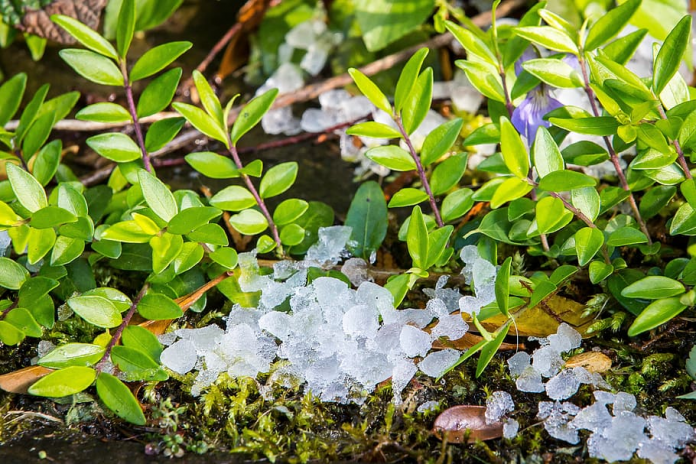by guest writer TJ Yurko
Hailstorms are a quintessential part of summer in Alberta, a bane to both farmers and urbanites alike. These unique storms are responsible for a myriad of horticultural problems including reduced crop yields, poor quality plants, unprofitable product, and increased costs and expenses. So, whether it be edible or ornamental, protecting your plants against hail damage is a sound investment to save your plants (and your wallet)!
Cultural Selection
While there isn’t truly such a thing as a “hail-proof” plant, some species are said to be “hail-tolerant” due to physical adaptations that can help rebuff hail damage such as flexible stems, an upright and/or dense growth habit, strong or dense wood, and leaves that are small, narrow, thick, waxy, or evergreen. Examples of hail-tolerant plants include ice plants, bearberries, grasses, honeylocusts, firs, pines, cypresses, arborvitaes, and junipers.
There are also physical adaptations that make some plants susceptible to hail damage such as large flowers, fleshy fruit, weak or brittle wood, and leaves that are large, wide, or thin. Plants that are particularly vulnerable to attack include tender plants (e.g. annuals, vegetables, etc.), shade-tolerant woodland plants (e.g. hostas, dogwoods, etc.), and shade-intolerant, self-pruning trees like willows, elms, maples, birches, and poplars.
Physical Protection
At the first sign of hail, be ready to cover vulnerable plants with temporary structures like plastic containers or overturned wheelbarrows. Given the area satisfies the plant’s cultural requirements, vulnerable plants can also be installed under permanent structures such as rooftop awnings, windowsills, row covers, or hail netting.
Hail can be difficult to predict, so it’s best to plan ahead if at all possible. If you need help protecting your garden this summer, don’t hesitate – contact a professional gardener today!









